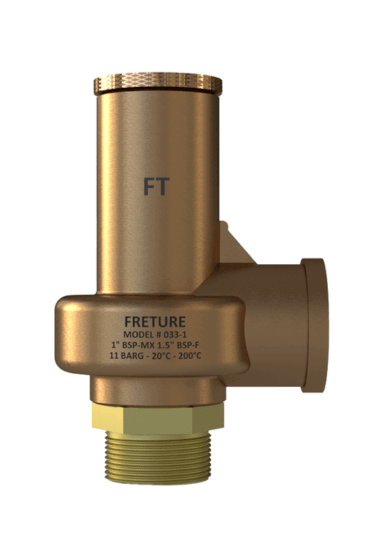In recent years, the water treatment industry has observed a steady rise in demand for pressure-reducing valves (PRVs). These valves, essential for controlling and maintaining optimal pressure levels in water systems, have become increasingly critical as the sector expands to meet the growing need for clean, safe, and efficiently distributed water. PRVs offer significant benefits by enhancing system stability, safeguarding infrastructure, and ensuring operational efficiency, which is why they are integral to modern water treatment facilities. This article explores the factors driving the demand for pressure-reducing valves and their importance in the water treatment sector.
Understanding Pressure Reducing Valves and Their Role
Pressure-reducing valves are designed to control the pressure of water flowing through pipelines, maintaining it at a safe, predefined level. In water treatment facilities, these valves prevent excessive pressure buildup, which could lead to equipment damage, pipeline ruptures, and water loss. By moderating pressure levels, PRVs ensure that the distribution network operates smoothly, allowing for safe and reliable water delivery.
These valves function through an internal mechanism that adjusts based on incoming water pressure. When upstream pressure increases, the PRV automatically closes partially to reduce the flow rate, thus lowering the downstream pressure. Conversely, if pressure drops, the valve opens wider to allow more flow. This dynamic adjustment helps maintain a consistent pressure level, even in fluctuating conditions, which is essential for sensitive water treatment processes.
 |
| High Pressure Reducing Safety Valve Manufacturers in India |
Growing Demand for PRVs in Water Treatment
Several factors are contributing to the rising demand for pressure-reducing valves within the water treatment sector.
Increasing Need for Water Conservation
As global water resources face strain due to population growth, urbanization, and climate change, water conservation has become a top priority. Pressure-reducing valves play a crucial role in minimizing water waste by controlling excessive pressure, which reduces leakage and prevents water loss. By implementing PRVs, water treatment facilities can significantly cut down on water wastage, aligning with conservation efforts.Expansion of Infrastructure in Developing Regions
In developing countries, significant investments are being made to build new water treatment plants and improve water distribution systems. Pressure-reducing valves are essential components in these infrastructures, ensuring stable water flow across vast networks. As more regions strive to provide safe and accessible water to growing urban populations, the installation of PRVs is increasing to support these large-scale projects.Emphasis on Operational Efficiency
Water treatment facilities aim to operate efficiently to minimize costs and resource usage. Pressure-reducing valves contribute to operational efficiency by reducing the strain on pumps and pipelines. Lower pressure means less energy is required to move water, which leads to energy savings and reduced operational costs. As energy efficiency becomes a more critical factor in the water treatment industry, PRVs are increasingly seen as a valuable investment.Enhanced Protection for Equipment and Infrastructure
High-pressure fluctuations in water systems can damage sensitive treatment equipment and pipelines. Pressure-reducing valves protect infrastructure by maintaining stable pressure levels, reducing the likelihood of sudden pressure spikes that could harm equipment. This added layer of protection extends the life of water treatment facilities and reduces maintenance costs, adding to the demand for PRVs in the sector.
Innovations in Pressure-Reducing Valve Technology
Advancements in pressure-reducing valve technology are further boosting their adoption in the water treatment sector. Manufacturers are focusing on developing PRVs with improved materials, durability, and functionality to meet the sector’s demands. Modern PRVs are increasingly being designed with corrosion-resistant materials to withstand the challenging conditions within water treatment facilities. Additionally, valves with remote monitoring capabilities are now available, allowing for real-time data tracking and adjustments to optimize performance and reduce downtime.
Automatic PRVs, which do not require manual adjustments, have become especially popular in recent years. These valves can self-adjust to changing pressure conditions, making them ideal for large-scale water systems where constant pressure monitoring would be labor-intensive. Such innovations are driving more facilities to upgrade their pressure control systems, further increasing demand for Pressure Reducing Valve.
Benefits of PRVs for Water Treatment Facilities
The numerous advantages provided by pressure-reducing valves make them indispensable in water treatment applications. Some of the key benefits include:
- Improved Water Quality: By controlling pressure, PRVs prevent contaminants from entering the distribution network due to pressure imbalances, ensuring the quality of treated water.
- Reduced Leakage and Waste: Excessive pressure can lead to leaks, resulting in water wastage. PRVs minimize leakage, which conserves water and reduces losses.
- Lower Maintenance Costs: Stable pressure reduces wear and tear on equipment and pipes, leading to fewer repairs and maintenance requirements.
- Enhanced Energy Efficiency: Reduced pressure results in lower energy usage, cutting operational costs for treatment facilities.
Challenges and Future Prospects
While pressure-reducing valves offer multiple benefits, certain challenges exist in their implementation. The initial installation costs, especially for advanced PRVs with digital monitoring, can be substantial. Additionally, regular maintenance is required to ensure optimal performance and longevity. However, as the technology evolves and manufacturing costs decrease, more water treatment facilities are likely to adopt Pressure Reducing Valve as a standard component.
The future of pressure-reducing valves in the water treatment sector looks promising, with demand expected to continue rising. As water treatment plants expand, adapt to environmental pressures, and incorporate smart technologies, PRVs will become even more vital in ensuring efficient and safe operations. Moreover, government regulations and industry standards promoting water conservation and infrastructure resilience will further encourage the adoption of Pressure Reducing Valve.
Conclusion
The rising demand for pressure-reducing valves in the water treatment sector reflects their essential role in supporting sustainable and efficient water distribution. From preventing water loss and reducing energy consumption to protecting equipment and maintaining water quality, PRVs offer multiple advantages that align with the goals of modern water treatment facilities. As the sector continues to evolve, the significance of PRVs will likely increase, establishing them as a key component in the global effort to provide safe and accessible water.



